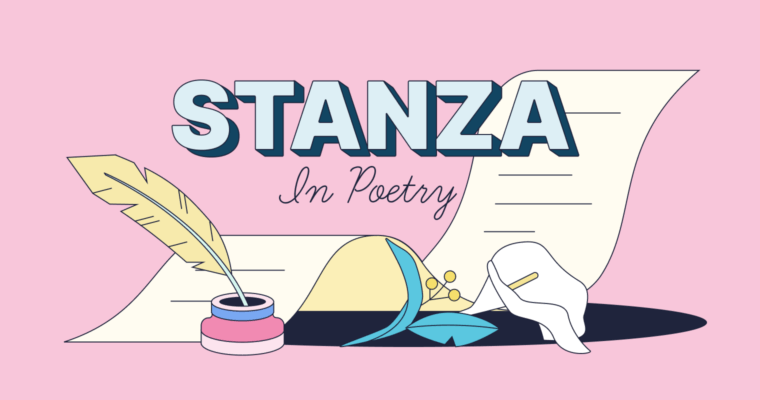
- A haiku is a short, unrhymed poem. The structure of a haiku in English typically follows a three-line, 5-7-5 syllable pattern.
- They originated in Japan and are now written in many languages worldwide.
- Haiku traditionally focus on nature and the seasons, but modern versions explore a wide range of topics.
- Traditional haiku follow specific rules like seasonal references and cutting words, while modern haiku allow more flexibility.
- Writing a haiku involves brainstorming, drafting, and revising to create a vivid, focused moment.
Haiku are short poems that pack powerful imagery into just a few lines. In this guide, you’ll learn what a haiku is, explore the structure of a haiku, and discover how to write a haiku step by step. You’ll also find traditional and modern examples of haiku that highlight the form’s creativity and evolution.
Table of contents
What is the structure of a haiku?
How are haiku different from other poems?
What is a haiku?
A haiku (pronounced high-koo) is a short, unrhymed poem that follows a specific three-line, seventeen-syllable format. Unlike many other types of poetry, haiku do not rhyme.
People across the globe read and write haiku in many different languages. Because of the unique syllabic and grammatical structures of different languages, haiku has slightly different formats from language to language. The main format we’ll focus on here is the English haiku format.
History of haiku
Haiku originated in Japan and evolved from a poetic form called renga, a collaborative, linked-verse poem. The opening stanza of a renga, called a hokku, eventually became its own form. In the late 1800s, poet Masaoka Shiki helped define this form as “haiku,” giving it the name we use today.
What is the structure of a haiku?
At its core, a haiku is defined by its brief, structured form. In English, a traditional haiku is composed of three unrhymed lines with a specific syllable count:
- Line 1: 5 syllables
- Line 2: 7 syllables
- Line 3: 5 syllables
This 5-7-5 pattern is a key feature of the form. Remember that haiku do not rhyme, as rhyming disrupts the simplicity and natural flow that the form aims to capture.
While modern versions often bend the rules, traditional haiku follow specific guidelines, especially in their original Japanese form.
Japanese haiku structure and form
In Japanese, haiku are written as a single line and follow the same 5-7-5 pattern, though not in syllables, but in on (phonetic units unique to Japanese). On are similar to syllables, but not exactly the same. As a result, direct translations between Japanese and English often shift syllable counts slightly.
For example, a Japanese word might have three on but only two syllables in English. This is why English haiku use a three-line format instead of one.
Traditional haiku elements: kireji and kigo
In addition to structure, traditional Japanese haiku often include two essential components:
- Kireji: A cutting word that creates a pause, contrast, or sense of closure. There’s no direct equivalent in English, but punctuation like an em dash (—) or ellipsis (…) is often used to mimic its effect.
- Kigo: A word or image that anchors the poem in a particular season, such as “snow,” “cherry blossoms,” or “cicadas.” Kigo help ground the haiku in nature, a central theme of traditional haiku.
These elements are optional in English-language haiku, but including them can give your poem a more traditional feel. Many modern haiku choose to forgo kireji and kigo in favor of different creative approaches.
How are haiku different from other poems?
Haiku stand apart from other poetic forms due to their brevity, structure, and focus on capturing a fleeting moment. While rooted in tradition, the form has evolved over time, giving poets room to experiment while still preserving the essence of haiku.
Traditional haiku themes and style
Historically, haiku focus on nature, especially seasonal changes. A typical haiku captures a single moment in time and often juxtaposes two images to create contrast or evoke emotion.
Here’s an example of a traditional haiku by Matsuo Bashō:
An old silent pond…
A frog jumps into the pond,
splash! Silence again.
This haiku illustrates the traditional style: brief, sensory, and rooted in the natural world.
Modern haiku
Over time, haiku have evolved. While traditional haiku follow strict rules, modern haiku often experiment with format, subject matter, and structure.
Here’s an example of a modern haiku by Alexis Rotella:
Just friends:
he watches my gauze dress
blowing on the line.
This poem doesn’t follow the 5-7-5 syllable structure but still feels like a haiku—brief, intimate, and focused on a single moment. It’s a good example of how form can be descriptive (based on feel and convention) rather than prescriptive (based on strict rules).
Do haiku have subtypes?
Unlike other poetic forms like sonnets or villanelles, which have spawned distinct subtypes over time, haiku have remained relatively unified in form. Despite modern experimentation, no widely recognized haiku subtypes have yet emerged.
However, there are a few related forms that share structural or thematic similarities:
- Senryū: follows the same 5-7-5 structure as haiku but focuses on human nature, irony, or humor instead of nature or seasons
- Tanka: an older, longer Japanese form comprising five lines with a 5-7-5-7-7 syllable pattern.
- Haibun: a combination of prose and haiku.
How to write a haiku
Though short, haiku can be surprisingly challenging yet deeply rewarding to write. Like any poem, the process benefits from a few key steps:
1. Brainstorm
The first step is to brainstorm. Start by choosing a topic. Traditional haiku often focus on nature or the seasons, but you can also write about personal experiences, emotions, or modern life. Think about a moment you want to capture.
2. Prewrite
Jot down ideas, images, and words related to your topic. Play with phrasing that fits the 5-7-5 syllable pattern, or decide if you want to go with a more free-form approach. You don’t need a complete outline—just explore combinations that feel natural and avoid clichés.
Also, consider the general rules of writing poetry, like avoiding clichés and writing from a place of honesty. These aren’t requirements for your haiku, but they can be helpful guidelines.
3. Write
Begin crafting your haiku. Focus on rhythm, clarity, and flow. Say lines aloud to make sure they sound smooth and balanced. Even if you’re not planning to perform it, listening helps reveal awkward phrasing or offbeat rhythms.
After finishing your draft, step away from it. A little distance helps you return with fresh eyes.
4. Revise
Come back later to revise your haiku. It may even help to read it aloud. Look for spots where a stronger word could replace a weaker one, or where a line could flow more smoothly. Once you’re happy with the result, your haiku is done!
If you want to share or publish your work, consider posting it online, submitting to a literary journal, or adding it to a poetry collection.
Examples of haiku
Haiku come in many forms—from traditional nature-focused poems to modern, personal snapshots. Below are examples of both styles, written by poets from different eras and cultures.
Examples of traditional haiku
In Kyoto,
hearing the cuckoo,
I long for Kyoto.
—Matsuo Bashō (Japan, 17th century)
After killing
a spider, how lonely I feel
in the cold of night!
—Masaoka Shiki (Japan, 19th century)
A summer river
being crossed—
how pleasing with sandals in hand!
—Yosa Buson (Japan, 18th century)
Morning glory—
the well bucket entangled,
I ask for water.
—Kaga no Chiyo (Japan, 18th century)
Examples of modern haiku
Nightfall—
too dark to read the page,
Too cold.
—Jack Kerouac (USA, 20th century)
Lily:
out of the water…
out of itself.
—Nick Virgilio (USA, 20th century)
Just friends:
he watches my gauze dress
blowing on the line.
—Alexis Rotella (USA, 20th century)
coconut oil sheen
mother combs ocean into
my tangled hair
—Kathy Jetn̄il-Kijiner (Marshall Islands, contemporary)
Haiku FAQs
What are haiku?
Haiku are short, unrhymed poems that adhere to a specific three-line, seventeen-syllable format. Traditionally, haiku depict tiny moments in time and may include a kireji (a “cutting word”) that creates a pause or sense of closure and a kigo, or a seasonal reference.
Is haiku singular or plural?
The word haiku is both singular and plural. In English, it’s correct to say, “I wrote a haiku” and “She shared three haiku.” You don’t need to add an -s to make it plural, though some people mistakenly say haikus. While haikus may occasionally appear in informal contexts, haiku is the standard and preferred form in both singular and plural usage.
What are common haiku themes?
Traditionally, haiku focus on nature and the seasons, often using a seasonal word (kigo) to anchor the moment. While nature remains a popular theme, modern haiku often explore a wider range of subjects, including personal experiences, emotions, and everyday life. What matters most is capturing a brief, vivid moment—regardless of the topic.
What are the rules for structuring a haiku?
Traditionally, a haiku meets the following requirements:
- It has three lines.
- It has five syllables in the first and third lines.
- It has seven syllables in the second line.
- Its lines don’t rhyme.
- It includes a kireji, or cutting word.
- It includes a kigo, or a seasonal reference.
Are all haiku written in the 5-7-5 format?
Traditional haiku follow the 5-7-5 syllable structure, but modern haiku often take creative liberties. As long as the poem is short and captures a focused moment, slight variations in structure are widely accepted.






